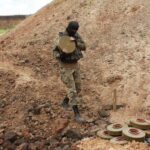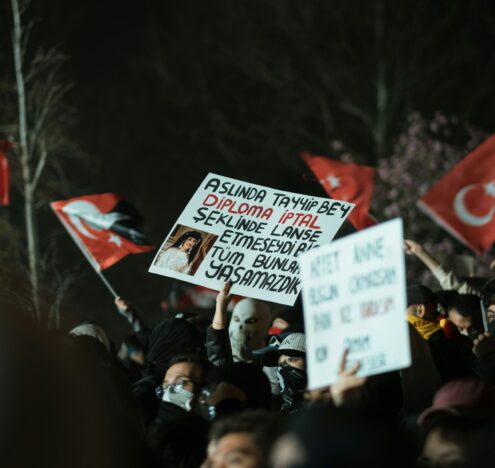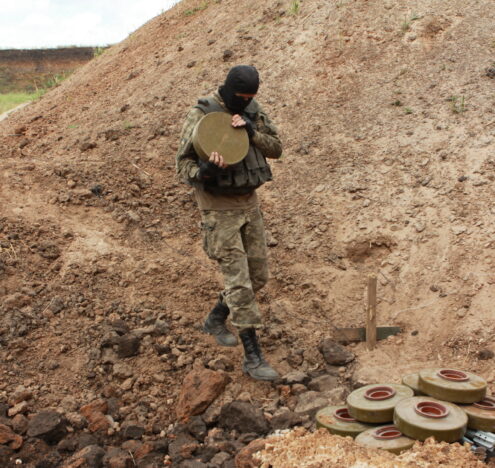In the early hours of Aug. 3, 2014, militants of the terror organization Daesh, commonly known as the Islamic State of Iraq and Syria (ISIS), unleashed a massacre against the Yazidi community surrounding Mount Sinjar in northern Iraq, leaving a lasting impact that reverberates to this day. Indeed, nine years after the atrocities committed against the Yazidis, thousands of Yazidi women and girls remain missing after having been kidnapped and likely trafficked by ISIS in 2014. Simultaneously, dozens of mass graves await exhumation to identify the victims and provide a sense of closure to grieving families. This historically marginalized minority religious community needs more than mere remembrance, it needs continuing support to pursue its ongoing fight for reconciliation and justice.
The Roots of the Violence
The rise of ISIS was years in the making. While its roots can be traced back to 1999, it was during the early 2010s that the terrorist group resurged with increased vigor. The 2004 invasion of Iraq by the United States and its allies has played a role in this development, as it disrupted the political landscape of the Middle East. Additionally, initiatives following the invasion, like the de-Baathification process, exacerbated the instability in Iraq, particularly among the Sunni minority.
Coupled with the political turmoil, “[the] Yazidi community in Iraq became more and more vulnerable, due to a rise in hate speech and disinformation, along with ongoing targeted religious persecution,” Abid Shamdeen wrote. Indeed, this unique religious community has endured more than 70 instances of attempted genocide. The community has suffered aggressive stereotyping and mischaracterization, attributable in part to groups such as ISIS who have conflated terminologies in the Yazidi religion, casting the Yazidis in an undeserved negative light and leaving them vulnerable to attacks.
To further worsen the matter for the community, the crimes committed against the minority were rarely investigated, fueling a sense of impunity amongst perpetrators. While there are numerous examples of such instances, one particularly harrowing attack that stands out is the 2007 killing of 23 Yazidis in northern Iraq. On that fateful day, unidentified perpetrators targeted a group of Yazidi individuals who were returning from the Mosul Textile Factory on a bus. The assailants separated the Yazidis from the rest of the passengers, hijacked the bus, drove it to eastern Mosul, and assassinated the members of the religious minority.
The United States’ pre-agreed withdrawal from Iraq in 2010, when more than 150 US bases and outposts shut down created a power vacuum. In the aftermath, “resources for supporting minorities were removed, and marginalized communities were left with little protection,” Shamdeen wrote. In this context, ISIS launched its offensive and swept across Sinjar, which at the time was the home to the world’s largest population of Yazidis.
Gender-Based Violence
Within days, a picture emerged of “ISIS committing almost unimaginable atrocities against the Yazidi community: of men being killed or forced to convert; of women and girls, some as young as nine, sold at market and held in sexual slavery by ISIS fighters; and of boys ripped from their families and forced into ISIS training camp,” the United Nations Human Rights Council reported. The terror organization enslaved over 6,000 women and children and committed mass murders of more than 5,000 men and older women, resulting in the discovery of over 80 mass graves throughout Sinjar, according to Nadia’s Initiative, an organization dedicated to the restoration of the Yazidi homeland in Iraq and the cessation of using women and girls as weapons of war.
Sexual violence as a weapon of war played a key role in the terrorist militants’ campaign to eradicate the Yazidis. This heinous tactic was not only condoned but encouraged through the codification of instructions on how to traffic Yazidi women in ISIS manuals. The intent to pursue these heinous acts has been attributed to the terror organizations’ aim to ethnically cleanse the Yazidi community from within, with a deliberate aim to “permanently destroy [these women’s] capacity to give birth to the next generation of Yazidis,” according to Amal Clooney, a human rights lawyer representing Yazidi victims of genocide.
An Ongoing Struggle
Now — nine years on — many survivors of the genocide remain in peril and the plight of the Yazidis continues. While the actions of the terror organization against the Yazidis have faded from the public’s view, this hasn’t resulted in a resumption of normalcy for the Yazidi community. The search for over 2,760 Yazidi women and girls still missing last year grows more challenging as time passes, and yet the efforts continue to bear fruit. In June 2023, six Yazidi women who had been held captive by ISIS since 2014 were successfully reunited with their families. The international community must take further action through centralized international coordination, to facilitate the safe return of remaining missing members of the community.
It is also essential to find creative means to hold the perpetrators of the crimes against the Yazidis accountable. Despite the “clear and convincing evidence” that the militants have perpetrated international crimes against the Yazidis, there have been limited efforts to bring the perpetrators to justice due to several factors. While “the atrocities allegedly committed by ISIS undoubtedly constitute serious crimes of concern to the international community,” the International Criminal Court faces a jurisdictional challenge given that neither Syria nor Iraq are signatories to the Rome Statute, the Court’s founding treaty. Consequently, the ICC lacks territorial jurisdiction to prosecute crimes committed within those territories. To deal with these limitations, there have been calls to establish an international or regional tribunal for the prosecution of ISIS members for international crimes, à la the International Criminal Tribunal for the former Yugoslavia and the International Criminal Tribunal for Rwanda. Yet logistical questions continue to hamper the attempts.
Accountability
Nonetheless, initial progress toward international accountability advanced when Germany convicted ISIS member Taha A.-J of genocide, crimes against humanity, and war crimes under the German Code for Crimes against International Law (Völkerstrafgesetzbuch). This first-ever conviction of an ISIS member for genocide was achieved using the principle of universal jurisdiction, which enables states to prosecute certain international crimes in national courts even if there are no direct ties to the country where the trial takes place. The rationale behind this legal apparatus is that crimes such as genocide and torture carry exceptional gravity; thus, affecting the fundamental interests of the international community as a whole. Simultaneously, the principle of universal jurisdiction seeks to ensure that perpetrators do not find safe haven in third countries.
While Germany has been a trailblazer in this regard; the international community must keep up the momentum to prosecute ISIS perpetrators for their international crimes. This is especially important considering that the United Nations’ mechanism for documenting ISIS atrocities, the Investigative Team to Promote Accountability for Crimes Committed by Da’esh/ISIL (UNITAD), has announced its intention to cease operation after September 2024. This is despite the fact that “[m]any survivors […] see UNITAD as the only hope to achieve meaningful justice in Iraq,” according to a statement signed by 50 human rights organizations, given its diligent efforts in documenting and investigating the genocidal campaign of ISIS perpetrated against Yazidis. With no legal framework in place to utilize the acquired evidence within Iraq’s justice system or a strategy of moving forward without UNITAD’s expertise, activists have raised concerns about the potential to lose progress and abandon the push for achieving meaningful justice for survivors.
While the international community’s attention and priorities may change with the emergence of new conflicts and crises, the focus on addressing past atrocities must remain to set a precedent for future perpetrators that there are consequences for their crimes. Unfortunately, it appears that efforts to bring the necessary closure and justice to the Yazidi community have waned, leaving those affected to reconcile with the events that unfolded in August of 2014. We must keep up the fight to bring the remaining women and girls home and continue international efforts for accountability. As the world commemorates another anniversary of the Yazidi genocide, the international community should ask itself whether it is doing enough to bring closure and healing to the victims. For now, the answer appears to be a resounding “no.”




















